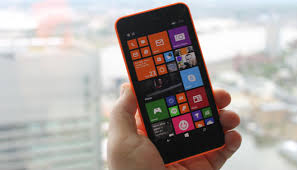Picture this: It’s 2014. 4G networks are rolling out globally, Android flagships cost $700+, and first-time smartphone buyers face a wall of complexity. Enter Nokia’s Lumia 630 series—a rainbow-colored, no-nonsense Windows Phone lineup that redefined “affordable smart.” Fast-forward to today, and these devices remain cult favorites for backup phones, IoT controllers, or minimalist users. Let’s unpack why.
🎨 Design & Usability: Where Practical Meets Playful
- Modular Color Shells: Swap back covers (matte black/white or glossy orange/yellow/green) to match your mood—no case needed. The removable 1830mAh battery added rare flexibility.
- 4.5-inch IPS LCD Screen: With ClearBlack technology and Gorilla Glass 3, it delivered solid sunlight readability despite its FWVGA (854×480) resolution—perfect for one-handed use.
- Virtual Navigation Keys: A first for Lumia, WP8.1 moved buttons on-screen, shrinking the bezel and modernizing the look.
Why it resonated: At 134g and 9.2mm thick, it prioritized grip and durability over thinness—a tradeoff budget buyers embraced.
⚙️ Performance & Hardware: Striking the Balance
Driven by a 1.2GHz Snapdragon 400 quad-core CPU, the 630 series handled Office Mobile and light gaming smoothly. But RAM split the family:
- Lumia 630/635: 512MB RAM—sufficient for WP8.1’s lean OS but blocked some RAM-hungry games like Asphalt .
- Lumia 636/638: 1GB RAM—unlocked full app compatibility and multitasking, making them the gamer’s choice.
Storage was uniform: 8GB internal + 128GB microSD support—a lifesaver for storing offline HERE Maps or music.
📱 The Windows Phone 8.1 Advantage: Microsoft’s Secret Sauce
Unlike Android budget phones drowning in bloatware, WP8.1 offered:
- Cortana voice assistant (beta) and live Glance Screen notifications
- Free lifetime HERE Drive turn-by-turn navigation—no subscriptions
- Office Mobile preinstalled: Real Word/Excel editing, not just viewers
- Battery efficiency: 26-day standby time—still impressive today
Yet tradeoffs existed: No front camera, no LED flash, and limited Instagram support frustrated social users.
📶 4G Evolution: How 635/636/638 Changed the Game
While the Lumia 630 stuck to 3G, its siblings embraced early 4G with carrier-specific models:
| Model | Lumia 630 | Lumia 635 | Lumia 636 | Lumia 638 |
|---|---|---|---|---|
| Release Date | May 2014 | Mid-2014 | July 2014 | June 2014 |
| RAM | 512MB | 512MB | 1GB | 1GB |
| Network | 3G (WCDMA/GSM) | 4G LTE | 4G LTE (China Unicom) | 4G LTE (China Mobile) |
| Key Feature | Dual-SIM option | Global LTE bands | 128GB storage | “4G” logo on bezel |
| Launch Price | ~$160 | ~$180 | ~$210 | ~$210 |
| Best For | Emerging markets | Travelers | Chinese app users | Chinese gamers |
*Note: The 636/638’s 1GB RAM became their killer feature—enabling games like Halo: Spartan Assault that choked 512MB devices.*
🎯 Who Should Consider These in 2025?
While not daily drivers anymore, they shine in niche roles:
- Backup/Disaster-Ready Phones: With 26-day standby time, keep one in your car for emergencies.
- Teens/Elderly Users: Simple UI, physical buttons (via cover), and shatter-resistant builds.
- Microsoft Ecosystem Loyalists: Sync with OneDrive/Outlook sans distractions.
For detailed specs and hands-on experience with Nokia phone batteries, we recommend visiting our website batteriesglobal.co.uk or our exclusive launch tests on our blog.
